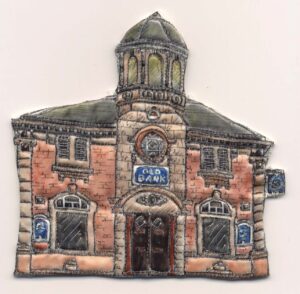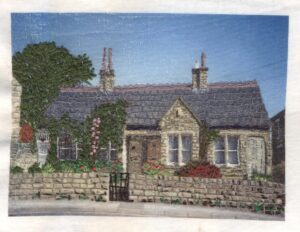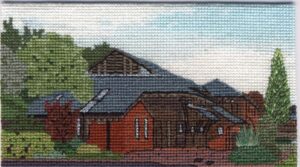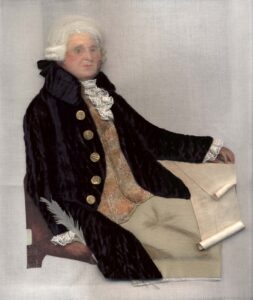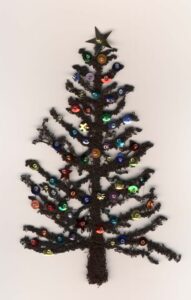The Making of the Horbury Tapestry
This 2004 video is a contemporary record of the making of the Horbury Tapestry. Project leader Janet Taylor takes viewers on a tour of Horbury through the tapestry drawing attention to various features, techniques and the fun the volunteers had making it. We believe that Geoff Spiller filmed the video
Janet’s talk provided a basis for the notes used in the Horbury Tapestry Then and Now digital picture gallery project although volunteers’ research work into the historical context did result in a few minor amendments.
Technology has moved since 2004 and the video seemed rather dated and in some parts damaged. However, One to One Development Trust reminded us that in our throw away age we are in danger of losing heritage material of this kind. So we are delighted that they have generously given their services to restore the video to capture the history of the making in the tapestry and the pleasure it brought to project participants and the community it portrays.
Designing the Layout
Janet Taylor had a clear idea of the general layout from the very beginning. Taking an ordnance survey map and tilting it several degrees NW gave a vertical oblong framework of the river, roads and railway around which she could fit the various elements of the tapestry. Initially it was planned on a big sheet hanging on Janet's landing where the group gradually tried out the individual pieces, first with photos and then with the finished pieces until they finally decided where to position them. Many items are true to their location, other elements have been grouped together. artistic licence that enabled the team to convey the many facets of Horbury.
The group used photographs and other images. Geoff Spiller scanned and mirror-imagined them, printed them on transfer paper which was then ironed onto white cotton fabric. The stitchers were asked to interpret these using whatever techniques and colours they felt best. Many of the stitchers had a direct connection with the people or places they were depicting. Each piece has a spontaneity only achieved by everybody doing their own thing in their own way. There are examples of the following
The transfer method means that many of the faces are recognisable.


The trees are stitched into dissolvable fabric, but they have to be sewn using a zig zag pattern with the stitches crossing over one another, so that when the supporting fabric is dissolved, the stitches don’t just fall apart. The examples on the left were sewn by Moira Parsons and those on the right by Janet Taylor. You will see that different kinds of thread and different stitches were used, with different effects.
Before the individual pieces were affixed a layer of calico was stretched over a wooden 8ft x 4ft frame and then a soft green cotton fabric was laid on top for the base colour. Later as the work was assembled various coloured nets were overlaid - blues and purples in the watery areas by the river and canal, and different green nets where there is grass - in the park and garden areas and brown nets under the more urban areas, thus making a subtle background to the stitched pieces of work. The whole frame then rested on trestle stands.
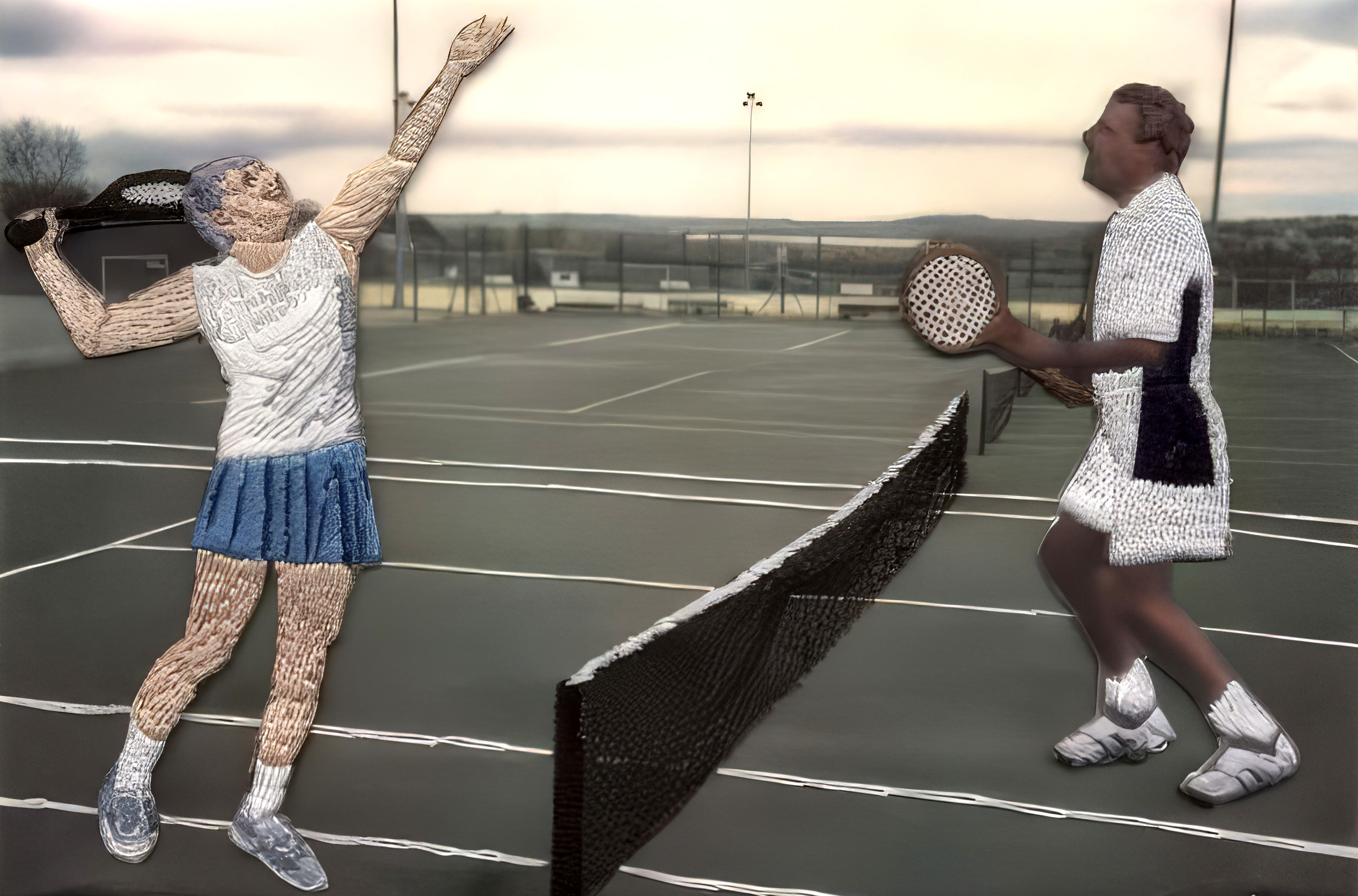
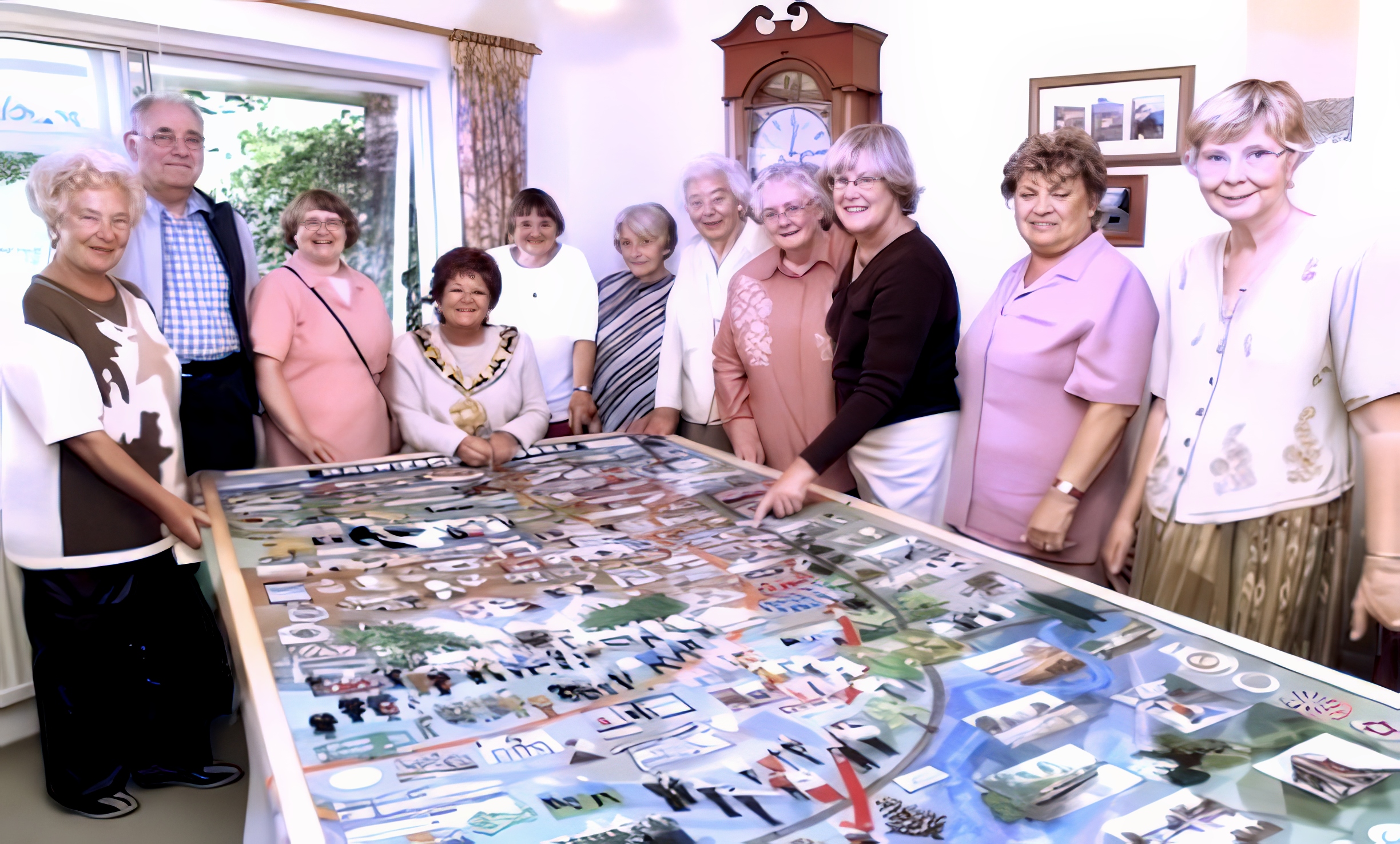
Peter Vickers/Wakefield Express/National World
Here we see Horbury councillor Janet Holmes, Mayor of Wakefield, stitching in the image of herself in her mayoral robes. However, for pieces further away from the edge it required one stitcher to lean over the cloth and put in the initial stitch, another stitcher lying on the floor under the frame and returning the needle back to the upper surface. It turned into a bit of a party game at times. Placing this final piece was a cause for celebration.
L to R Janet Taylor, Geoff & Sylvia Spiller, Molly Partington, Olive Sargeant, Gladys Bell, Pat Bradley, Hilary Elstone, Yvonne Townsend, Eileen Brewer.
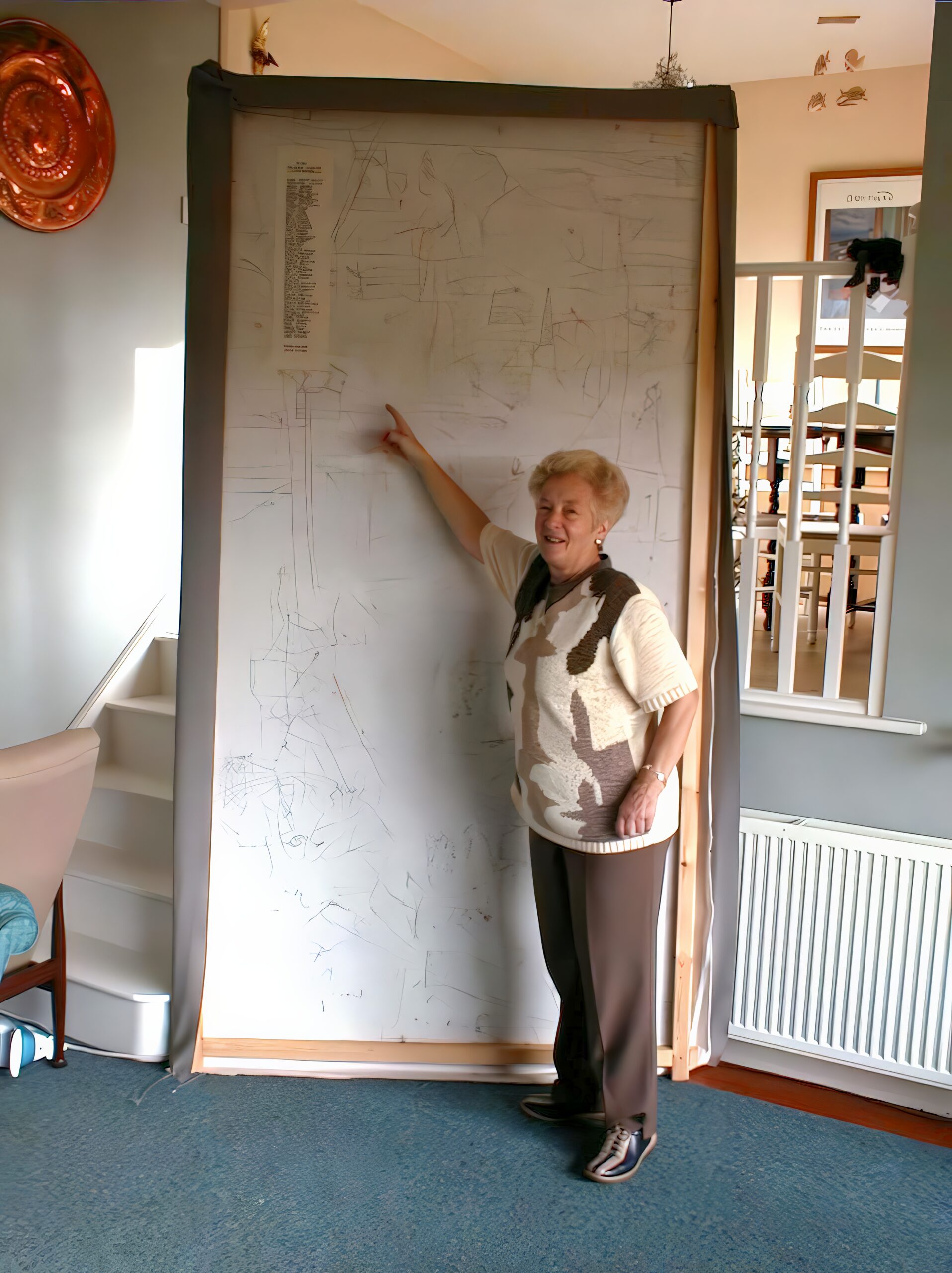
At this stage the tapestry was housed in a fairly light wooden oak frame. Janet Taylor is seen here pointing to the back of the work and the embroidered list of the stitchers.

Horbury Tapestry Stitchers
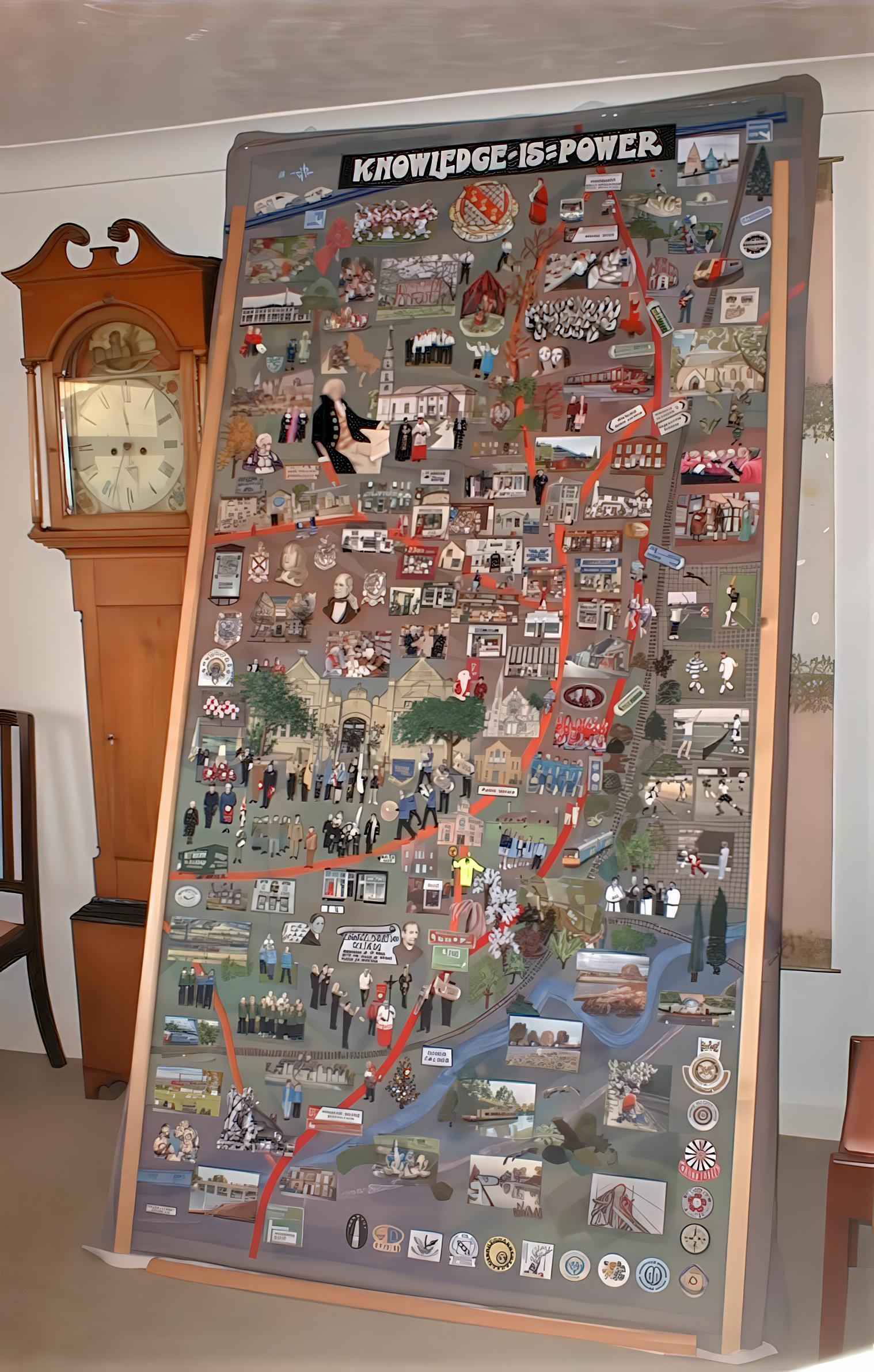
The finished tapestry was then sent to a specialist company that could mount it in a more substantial box frame, which would accommodate the 3D nature of the pieces. with a sunlight resistant cover to protect the tapestry from fading. The same company installed it in Horbury Library.
The Grand Unveiling
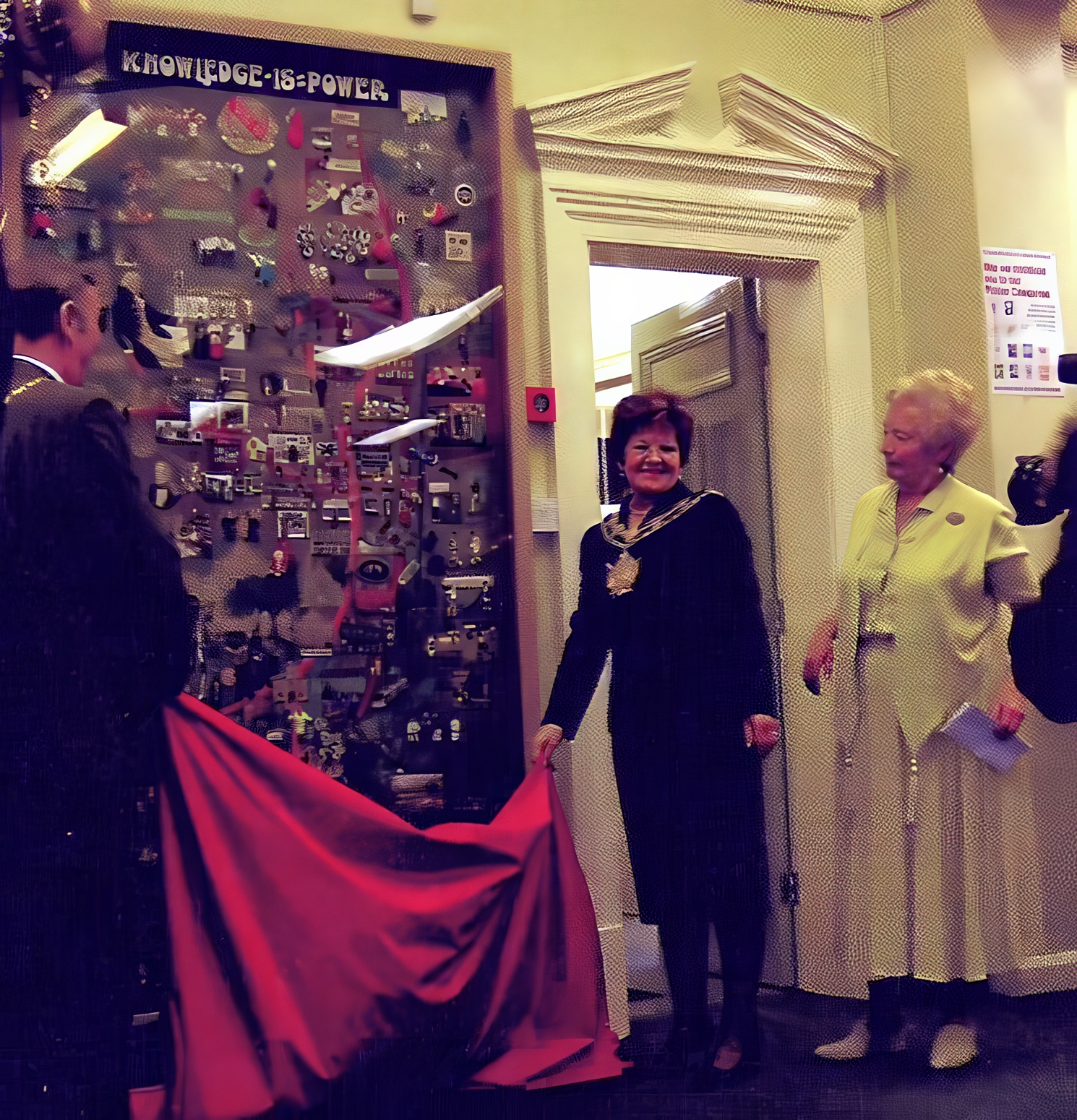
Janet Holmes, Mayor of Wakefield, accompanied by her husband Councillor Brian Holmes, unveiled the mounted and framed tapestry on 8th January 2005. Project leader, Janet Taylor looks on.
Our thanks go to the Wakefield Council and their Community Chest for their financial support, together with The Common Lands Trust. Thanks to them we have been able to create this tapestry, mount and display it in the library. Thanks to all the stitchers for giving freely of their time and expertise to create such a wonderful piece of work that triggers so many happy memories. Finally, particularly heartfelt thanks should go to Janet Taylor, who masterminded this project from beginning to end, leaving a lasting record of Horbury in 2003/4.
Many people have found new skills, resulting in some beautiful sensitive pieces. Over the course of the project new friends were made.

